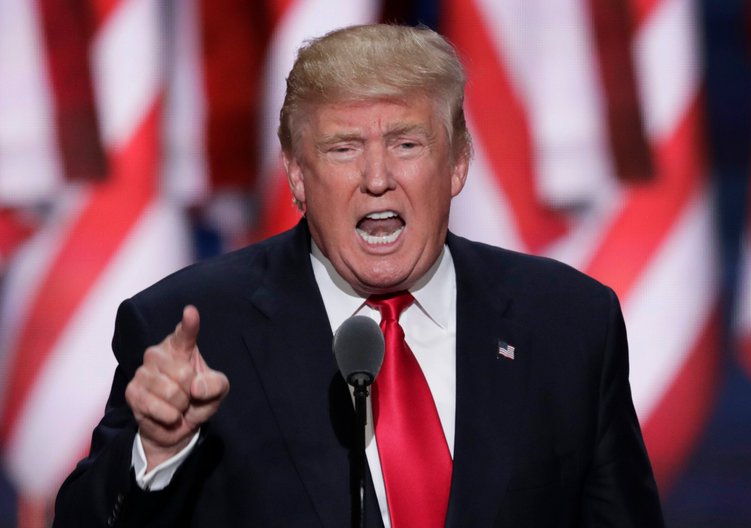
Since President Donald Trump took office, the US and EU have drifted apart. In the first year of Trump’s presidency, the two sides argued over the issues of European integration, military spending, trade and refugees, but in the second year they have clashed on a range of substantive issues.
Specifically, Trump levied tariffs on EU imports of steel and aluminium products on the grounds that they pose a threat to US national security, affording the bloc no special treatment even as a traditional ally of the US, demanding instead that it meet conditions to apply for an exemption. Trump also withdrew from the Iranian nuclear deal despite repeated entreaties by France and Germany to reconsider his position, thereby undoing their previously fruitful diplomatic work, with the US going so far as to threaten to impose sanctions on EU companies that trade with Iran; to expand sales of US natural gas in the EU and stop the construction of the Nord Stream 2 natural gas pipeline connecting Russia and Europe, Trump threatened to impose sanctions on the state energy companies of France, Germany, Austria and others that are funding the project. All of the above has pushed the EU into a corner and intensified the split between the US and EU.
Little wonder, then, that Donald Tusk, President of the European Council recently said, “Looking at the latest decisions of President Trump, someone could think ‘with friends like that, who needs enemies?’” Tusk added, “I have no doubt that in the new global game, Europe will either be one of the major players, or a pawn.” This is the only real alternative. Tusk’s pessimism towards the prospects for transatlantic relations is clear.
After the US withdrew from the Iran nuclear deal, the leaders of France, Germany, and Britain issued a joint statement announcing their countries’ intentions to uphold the deal. Miguel Arias Cañete, European Commissioner for Climate Action and Energy, visited Iran to convey the message that the EU remains committed to the agreement and hopes to increase trade with Iran. The EU reacted negatively to US Secretary of State Mike Pompeo’s twelve demands for Iran. Moreover, the European Commission announced plans to renew a US sanctions-blocking measure to protect EU companies doing business with Iran, to provide a funding stream for European companies working in Iran, and to look at settling trade with Iran in euros. As Federica Mogherini, High Representative of the EU for Foreign Affairs and Security Policy, stated, these measures will prove the EU’s commitment to upholding the Iran nuclear deal.
In response to the US implementation of tariffs on steel and aluminium products, the European Commission announced that it had submitted to the World Trade Organization a list of US products that the EU may impose tariffs on. If the US goes ahead with its tariffs, the EU is ready to take retaliatory measures.
As for the Nord Stream 2 pipeline, previous Western sanctions against Russia have excluded the project due to its obvious benefits to the German economy and the wider EU. It is not long since German Chancellor Angela Merkel visited Russian President Vladimir Putin in Sochi, where Putin promised that Ukraine would continue to receive natural gas after the construction of Nord Stream 2. It was assumed that the US would have difficulty objecting to the project once the Ukraine issue was settled.
It is unsurprising that US-EU relations have reached the point they are at. Trump’s America First policy only allows for US interests. Presently, the only thing holding together the US-EU alliance is US interests, not the common interests of the US and other countries; nor is it the illusory values of freedom, democracy and human rights. Having previously been based on such common values, the US-EU alliance is falling apart. This is also the reason that the US and EU disagree on almost every major regional and international issue, with the exception of the combined action against alleged Syrian chemical attacks. In the main, EU foreign policy has digressed from the track taken by the Trump administration.
Viewing the world through the prism of the America First policy, the US not only panders to its allies, but also panders to China and other emerging economies. There are currently over 100 countries around the world that have a trade surplus with the US, and all of them are taking advantage of the US.
As everyone knows, however, the US receives countless benefits from utilizing the hegemonic position of the US dollar. Since the US dollar decoupled from gold a few years ago, US trade has suffered year-on-year deficits, and the better the US economy has performed, the greater the deficits have been. The reason is very simple. In exchange for printing dollar bills, the US receives goods from other countries. It is a profit-making business. In other words, the huge US trade deficit is caused by its own domestic structural economic factors. But the US views the world upside-down, so everything appears to be the opposite way around. Nobody, not even European allies, look right, so they too come under attack.
Under the America First policy, the US government is pursuing unilateralism and acting alone. It no longer emphasizes reaching consensus with allies and taking joint action. In many cases, even allies are regarded as opponents, and the US does not hesitate to adopt tough measures to exert pressure on them. This continuous escalation of conflict has made it difficult to resolve differences.
Trump’s America First policy is breaking down traditional barriers between East and West but breaking up the Western camp held together by shared values. The world’s political landscape is undergoing unprecedented changes, taking political multi-polarization to a whole new level as the great powers jockey for position. Harmony in diversity and mutually beneficial cooperation are becoming new trends in world politics.
